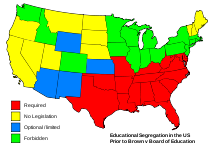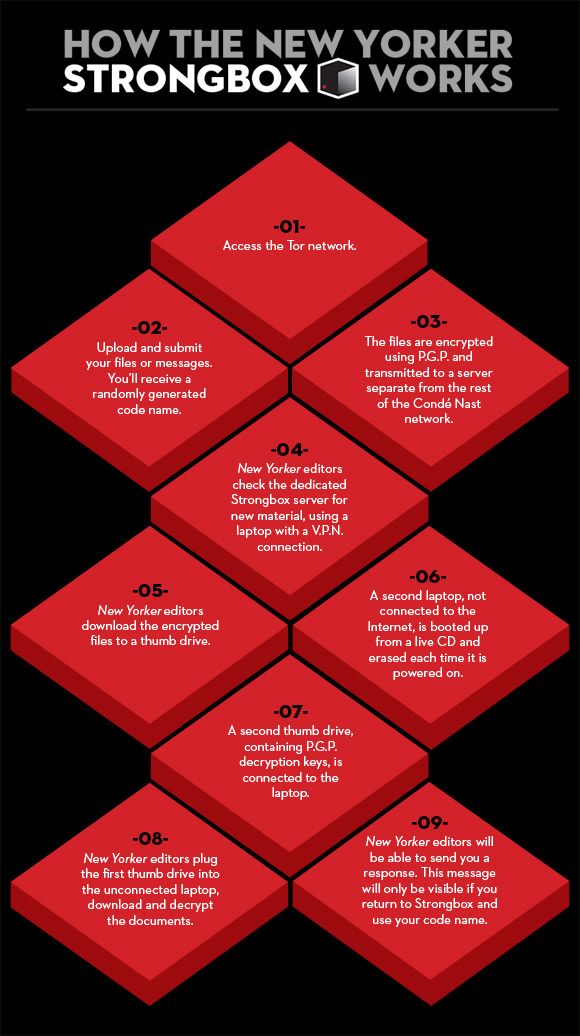May 17, 2013 archive
May 17 2013
Friday Night at the Movies
May 17 2013
Today on The Stars Hollow Gazette

Our regular featured content-
- On This Day In History May 17 by TheMomCat
- Punting the Pundit by TheMomCat
These featured articles-
- Keeping the Government Transparent, Anonymously by TheMomCat
- 501 (c) 3s and 4s by ek hornbeck
- The Mountain That Was Benghazi by TheMomCat
Follow us on Twitter @StarsHollowGzt
Write more and often. This is an Open Thread.
May 17 2013
On This Day In History May 17
Cross posted from The Stars Hollow Gazette
This is your morning Open Thread. Pour your favorite beverage and review the past and comment on the future.
Find the past “On This Day in History” here.
Click on image to enlarge
May 17 is the 137th day of the year (138th in leap years) in the Gregorian calendar. There are 228 days remaining until the end of the year.
On this day in 1954, in a major civil rights victory, the U.S. Supreme Court hands down an unanimous decision in Brown v. Board of Education of Topeka, ruling that racial segregation in public educational facilities is unconstitutional. The historic decision, which brought an end to federal tolerance of racial segregation, specifically dealt with Linda Brown, a young African American girl who had been denied admission to her local elementary school in Topeka, Kansas, because of the color of her skin.

Brown v. Board of Education of Topeka, 347 U.S. 483 (1954), was a landmark decision of the United States Supreme Court that declared state laws establishing separate public schools for black and white students unconstitutional. The decision overturned the Plessy v. Ferguson decision of 1896 which allowed state-sponsored segregation. Handed down on May 17, 1954, the Warren Court’s unanimous (9-0) decision stated that “separate educational facilities are inherently unequal.” As a result, de jure racial segregation was ruled a violation of the Equal Protection Clause of the Fourteenth Amendment of the United States Constitution. This ruling paved the way for integration and the civil rights movement.
The case of Brown v. Board of Education as heard before the Supreme Court combined five cases: Brown itself, Briggs v. Elliott (filed in South Carolina), Davis v. County School Board of Prince Edward County (filed in Virginia), Gebhart v. Belton (filed in Delaware), and Bolling v. Sharpe (filed in Washington D.C.).
All were NAACP-sponsored cases. The Davis case, the only case of the five originating from a student protest, began when sixteen-year-old Barbara Rose Johns organized and led a 450-student walkout of Moton High School.
The Kansas case was unique among the group in that there was no contention of gross inferiority of the segregated schools’ physical plant, curriculum, or staff. The district court found substantial equality as to all such factors. The Delaware case was unique in that the District Court judge in Gebhart ordered that the black students be admitted to the white high school due to the substantial harm of segregation and the differences that made the schools separate but not equal. The NAACP’s chief counsel, Thurgood Marshall, who was later appointed to the U.S. Supreme Court in 1967, argued the case before the Supreme Court for the plaintiffs. Assistant attorney general Paul Wilson, later distinguished emeritus professor of law at the University of Kansas, conducted the state’s ambivalent defense in his first appellate trial.
Unanimous Opinion and Key Holding
In spring 1953 the Court heard the case but was unable to decide the issue and asked to rehear the case in fall 1953, with special attention to whether the Fourteenth Amendment’s Equal Protection Clause prohibited the operation of separate public schools for whites and blacks.
The case was being reargued at the behest of Associate Justice Felix Frankfurter, who used re-argument as a stalling tactic, to allow the Court to gather a unanimous consensus around a Brown opinion that would outlaw segregation. Chief Justice Vinson had been a key stumbling block. The justices in support of desegregation spent much effort convincing those who initially dissented to join a unanimous opinion. Even though the legal effect would be same for a majority versus unanimous decision, it was felt that it was vital to not have a dissent which could be relied upon by opponents of desegregation as a legitimizing counterargument.
Conference notes and draft decisions illustrate the division of opinions before the decision was issued. Justices Douglas, Black, Burton, and Minton were predisposed to overturn Plessy. Fred M. Vinson noted that Congress had not issued desegregation legislation; Stanley F. Reed discussed incomplete cultural assimilation and states’ rights and was inclined to the view that segregation worked to the benefit of the African-American community; Tom C. Clark wrote that “we had led the states on to think segregation is OK and we should let them work it out.” Felix Frankfurter and Robert H. Jackson disapproved of segregation, but were also opposed to judicial activism and expressed concerns about the proposed decision’s enforceability. After Vinson died in September 1953, President Dwight D. Eisenhower appointed Earl Warren as Chief Justice. Warren had supported the integration of Mexican-American students in California school systems following Mendez v. Westminster.
While all but one justice personally rejected segregation, the self-restraint faction questioned whether the Constitution gave the Court the power to order its end. The activist faction believed the Fourteenth Amendment did give the necessary authority and were pushing to go ahead. Warren, who held only a recess appointment, held his tongue until the Senate, dominated by southerners, confirmed his appointment.
Warren convened a meeting of the justices, and presented to them the simple argument that the only reason to sustain segregation was an honest belief in the inferiority of Negroes. Warren further submitted that the Court must overrule Plessy to maintain its legitimacy as an institution of liberty, and it must do so unanimously to avoid massive Southern resistance. He began to build a unanimous opinion.
Although most justices were immediately convinced, Warren spent some time after this famous speech convincing everyone to sign onto the opinion. Justices Robert Jackson and Stanley Reed finally decided to drop their dissent to what was by then an opinion backed by all the others. The final decision was unanimous. Warren drafted the basic opinion and kept circulating and revising it until he had an opinion endorsed by all the members of the Court.
The key holding of the Court was that, even if segregated black and white schools were of equal quality in facilities and teachers, segregation by itself was harmful to black students and unconstitutional. They found that a significant psychological and social disadvantage was given to black children from the nature of segregation itself, drawing on research conducted by Kenneth Clark assisted by June Shagaloff. This aspect was vital because the question was not whether the schools were “equal”, which under Plessy they nominally should have been, but whether the doctrine of separate was constitutional. The justices answered with a strong “no”:
Does segregation of children in public schools solely on the basis of race, even though the physical facilities and other “tangible” factors may be equal, deprive the children of the minority group of equal educational opportunities? We believe that it does… Segregation of white and colored children in public schools has a detrimental effect upon the colored children. The impact is greater when it has the sanction of the law, for the policy of separating the races is usually interpreted as denoting the inferiority of the negro group. A sense of inferiority affects the motivation of a child to learn. Segregation with the sanction of law, therefore, has a tendency to [retard] the educational and mental development of negro children and to deprive them of some of the benefits they would receive in a racial[ly] integrated school system… We conclude that, in the field of public education, the doctrine of “separate but equal” has no place. Separate educational facilities are inherently unequal. Therefore, we hold that the plaintiffs and others similarly situated for whom the actions have been brought are, by reason of the segregation complained of, deprived of the equal protection of the laws guaranteed by the Fourteenth Amendment.
May 17 2013
Keeping the Government Transparent, Anonymously
Cross posted from The Stars Hollow Gazette
“Our liberty depends on the freedom of the press, and that cannot be limited without being lost.”
Since the news broke that the Department of Justice had secretly seized two months of phone records of the Associated Press reporters and editors, it has had chilling effect on the future ability of reporters to gather information from anonymous sources. On May 15, The New Yorker launched Strongbox “an online place where people can send documents and messages to the magazine,” affording a reasonable amount of anonymity:
It was put together by Aaron Swartz, who died in January, and Kevin Poulsen. Kevin explains some of the background in his own post, including Swartz’s role and his survivors’ feelings about the project. (They approve, something that was important for us here to know.) The underlying code, given the name DeadDrop, will be open-source, and we are very glad to be the first to bring it out into the world, fully implemented.

Click on image to enlarge
To get to Strongbox and begin using it to contact writers and editors at The New Yorker, just follow these two steps:
(1) Download and install software to access the Tor Project: https://www.torproject.org/ This should only take a few minutes.
(2)Once you have access to the Tor network, go to Strongbox at http://tnysbtbxsf356hiy.onion, where you will find further instructions on how to submit files and messages to The New Yorker.
Strongbox and Aaron Swartz
by Kevin Poulson
Aaron Swartz was not yet a legend when, almost two years ago, I asked him to build an open-source, anonymous in-box. His achievements were real and varied, but the events that would come to define him to the public were still in his future: his federal criminal indictment; his leadership organizing against the censorious Stop Online Piracy Act; his suicide in a Brooklyn apartment. I knew him as a programmer and an activist, a member of a fairly small tribe with the skills to turn ideas into code-another word for action-and the sensibility to understand instantly what I was looking for: a slightly safer way for journalists and their anonymous sources to communicate.
There’s a growing technology gap: phone records, e-mail, computer forensics, and outright hacking are valuable weapons for anyone looking to identify a journalist’s source. With some exceptions, the press has done little to keep pace: our information-security efforts tend to gravitate toward the parts of our infrastructure that accept credit cards.
Rachel Maddow interviewed the editor of The New Yorker magazine’s web site, Nicholas Thompson, about their “Strongbox” submission tool that allows sources to remain anonymous and untraceable when they submit a story tip.
This is how far we have come to protect the press and our constitutional right to know what the government is doing in our name. Thank you, Aaron and Kevin.
May 17 2013
Around the Blogosphere
Cross posted from The Stars Hollow Gazette
The main purpose our blogging is to communicate our ideas, opinions, and stories both fact and fiction. The best part about the the blogs is information that we might not find in our local news, even if we read it online. Sharing that information is important, especially if it educates, sparks conversation and new ideas. We have all found places that are our favorites that we read everyday, not everyone’s are the same. The Internet is a vast place. Unlike “Punting the Pundits which focuses on opinion pieces mostly from the mainstream media and the larger news web sites, “Around the Blogosphere” will focus more on the medium to smaller blogs and articles written by some of the anonymous and not so anonymous writers and links to some of the smaller pieces that don’t make it to “Pundits” by Krugman, Baker, etc.
We encourage you to share your finds with us. It is important that we all stay as well informed as we can.
Follow us on Twitter @StarsHollowGzt
This is an Open Thread.
Today at Corrente, we have lambert with a question about his garden and an interesting chart from Bonddad:
- Gardendote of the Day 2013-05-16
- Political risk increased when conditions improve, not when they are at their worst
and from libbyliberal:
Dean Baker is going on vacation but for he left he gave us something to chew on:
Gaius Publius on the climate at Americablog:
From the Electronic Frontier Foundation, news on the next round of talks on the Trans-Pacific Partnership agreement (TPP):
- Secretive TPP Talks Re-Commence in Lima, Peru: They Can Shut Us Out, But They Can’t Shut Us Up
by Maira Sutton - We Beat Them to Lima: Opening a New Front Against Secret IP Treaties
by Danny O’Brien
At emptywheel:
- The Internet Didn’t Kill the Middle Class; Laxity and Apathy Did
by Rayne - hat Is the Attrition Rate for Afghan Special Operations Forces?
by Jim White
At FDL’s The Dissenter, Kevin Gosztola:
and Jon Walker at FDL Action:
- More Signs Obama Will Likely Approve Keystone XL
- We Just Have to Take Holder’s Word That He Recused Himself From AP Case
- At Least Washington Isn’t Talking About the Grand Bargain Anymore
At RH Reality Check:
- Why Is El Salvador Letting a Woman Die?
by Marianne Møllmann, Amnesty International - Yes, Abortion Is a Women’s Issue, and Yes, More Male Allies Are Welcome
by Erin Matson, Editor at Large, RH Reality Check
Contributor Jaye Raye at Voices on the Square has a on going series on unions and human rights:
Charles P. Pierce on grifter Michelle Rhee, climate change and Missouri at Esquire’s Politics Blog:
Atrios named Michael Kinsley his Wanker of the day and Charles Pierce thinks he needs to shut up. Take a hint, Mike.
And the last words from Atrios: Deficit Panic
The real deficit panic is about the possibility that it might go away, making it slightly more difficult to engage in a program of poors kicking.
May 17 2013
IRS Gate: Just Ineffective Management?
Cross posted from The Stars Hollow Gazette
President Obama is definitely having a bad week with two screw ups by the IRS and the Department of Justice and the Republicans obsession with Benghazi. The media has latched on to these “crises” like pit bulls with a juicy ankle. While Benghazi-gate is purely political with its eye on tainting the possible 2016 presidential campaign of Hillary Clinton, the secret subpoena of AP’s phone records and the IRS targeting of right wing 501(c)4’s financing have more relevance.
The news that the IRS was focusing on conservative groups with words such as “tea party” or “patriot” in their names broke when the director of the IRS’s exempt-organizations division, Lois G. Lerner, confirmed complaints by tea party groups that their applications for tax-exempt status were being unfairly scrutinized and delayed. Oops.
Naturally, the right wing came was furious and rejected the IRS apology demanding an full investigation:
“I call on the White House to conduct a transparent, government-wide review aimed at assuring the American people that these thuggish practices are not underway at the IRS or elsewhere in the administration against anyone, regardless of their political views,” Senate Minority Leader Mitch McConnell (R-Ky.) said. “An apology won’t put this issue to rest.”
“The IRS has demonstrated the most disturbing, illegal and outrageous abuse of government power,” said Jenny Beth Martin, national coordinator of Tea Party Patriots. “This deliberate targeting and harassment of tea party groups reaches a new low in illegal government activity and overreach.”
The IRS has a notoriously bad history of being used by presidents to harass and intimidate their political enemies, most infamously by Richard M. Nixon. Since Watergate the IRS was reformed making it more independent supposedly to insulate from politics.
In a government oversight report (pdf) by the Treasury Inspector General for Tax Administration, the IRS was found to have acted “inappropriately” and was poorly managed allowing “inappropriate criteria to be developed and stay in place for more than 18 months.”
All In host, Chris Hayes discussed the report and how the IRS handled this internally with New York Times reporter Nicholas Confessor.
Andy Kroll at Mother Jones recounts the five things you need to know in the Inspector General’s IRS Tea Party Scandal Report:
Treasury’s Inspector General for Tax Administration conducted the probe from June 2012 to February 2013 in response to pressure from Congress, and the 54-page report sheds light on the whole debacle.
Here are five key takeaways from the report.
1) Incompetence appears to have caused this scandal, not wrongdoing. [..]
2) Even the IRS doesn’t understand how political is too political in the murky world of 501(c)(4) groups. [..]
3) All the confusion at the IRS led to a huge backlog and a lot of unnecessary headaches. [..]
4) The IRS didn’t feel outside pressure to single out tea partiers. [..]
5) The report gives as much fodder to transparency advocates as it does to IRS critics.


